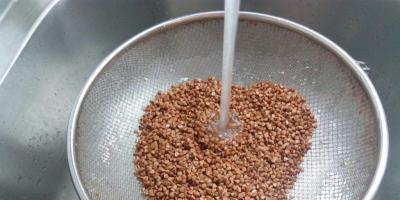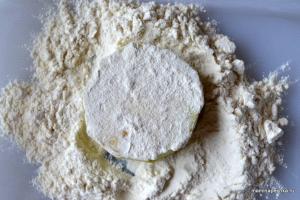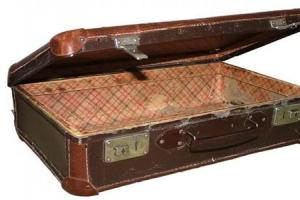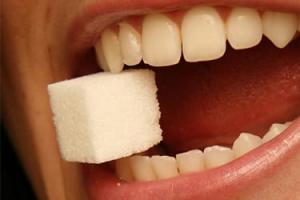T in the home is influenced by:
- Climate.
- Seasons.
- Individual features of housing.
Normal temperatures may vary in different areas. For example, in the southern and northern regions, in the eastern and western, its numbers vary.
Due to the alternation of seasons, the microclimate also changes. Temperatures increase significantly in summer and decrease in winter.
Features of housing layout also affect the maintenance of comfortable living. For example, in a corner apartment the degree of warmth is slightly lower.
The human factor is also involved in creating temperature characteristics. Each person has his own concept of heat and coolness. Women are naturally thermophilic; they need a slightly higher temperature than men. Young children do not know how to independently maintain their body temperature; they can easily become overheated or overcooled, which negatively affects their health.
Norms
Temperature regulation is carried out in accordance with GOSTR and the rules of the organization providing public services.
- A temperature of 20 to 25°C is considered comfortable.
- During the cold season 19 – 22 C.
- In the heat 22 - 25 C.
Temperature different rooms:
- Bedroom 17-18°C. In such conditions, the body rests and recovers.
- Kitchen 18-19°C. Saturated with heat-emitting electrical appliances, high t is not required.
- Bath 24-26°C. Because of high humidity dampness and discomfort arise. Requires t higher than other rooms.
- Children's room 23-24°C. Babies need a higher degree of warmth because they do not regulate their heat exchange well.
- Others 18-22°C.
Do not create sudden changes in heat between rooms, no more than 2°.
Heating season
Government Decree No. 354 of 05/06/2011 clearly indicates the heating period. Based on this decree, heat enters our homes with a persistent decrease in temperature environment less than eight degrees for eight days.
On the sixth day we may not receive the required service if:
- Not produced preliminary preparation heat supply networks. Usually all repair work is carried out in the summer.
- Accident. In case of a sudden breakdown, preventive measures may be powerless. Many factors, such as severe winter frosts or enormous summer heat, contribute to the rapid deterioration of communications.
The standard is developed for apartments with centralized heat supply. Having individual heating You don’t have to wait for the start of the season, but rather regulate the temperature in the house yourself.
The beginning of the heating season does not have a fixed date in our country. Depends on natural factors. Severe cold weather can occur in early or mid-autumn.
The approximate start date for heat delivery is the end of September and mid-October.
What temperature should it be in a corner apartment?
The temperature in a corner apartment should be two degrees higher than in others and is 20 degrees, the base one is 18. To maintain the given figure, in a cooler corner apartment, an additional battery is added to the project even before construction.
Optimal t mode:
- Bedroom 20–22.
- Children's 20-25.
- Kitchen 19–21.
- Bath 24–26.
- Others 20–22.

Allowed t mode:
- Bedroom 18–24.
- Children's 20–24.
- Kitchen 18–26.
- Bath 18–26.
- Others 18–24.
What temperature should the batteries be?
The temperature in our batteries is constantly changing, it mainly depends on weather changes, but it never goes above 90 degrees, this is enough to maintain comfortable conditions even in severe frosts. The main thing is a radiator of the appropriate brand with the necessary heat output.
Typically, throughout the year, water is heated to 50–70 degrees, in the summer it is supplied to the tap marked “hot”, and in the winter to the heating system.
The easiest way to measure:
- Place the thermometer in the container.
- Fill hot water from the tap.
Deviation is allowed only upward by 4 degrees.
Other measurement methods:
- Place the thermometer on the battery and add one to two degrees to the resulting figure.
- Buy an infrared thermometer, it’s a little more expensive, but it measures with an accuracy of 0.5 degrees.
- Connect an electrical device equipped with the “measure temperature” function to the battery using a thermocouple wire. Record the indicators.
Device for continuous thermometry:
- Choose the most appropriate place on the radiator.
- Place the most common alcohol thermometer.
- Secure with foam rubber for thermal insulation.
Fast, inexpensive, convenient and the temperature is regularly monitored.
Important. If the temperature does not meet the specified standard, file a complaint with the housing and communal services department. The arriving commission will determine the temperature of the water in the heating system. They are required to act in relation to paragraph 4 in the “Control Methods” of GOST 3049-96. The measuring device has a quality certificate, registration and verification. The error in its operation is no more than 0.1 degrees.
How to fix problems
Heating problems are immediately visible. Cold and constant dampness, the appearance of fungus on the walls. There can be no talk of any comfortable living for the human body.
Main signs of problems:

- The radiator has a small leak.
- Uneven heating when using “warm floor” equipment.
- Seething and noise in pipes.
- Uneven heat distribution across floors.
- Different degrees of heat from radiators in different rooms of the same apartment.
- Poorly functioning system overall.
Barely warm batteries- the most important sign of your problems.
Reasons for this situation:
- Incorrect design.
- Incorrect equipment installed.
- Unauthorized connections.
- Poor quality installation of the system.
- Presence of air in pipes.
- Violations when installing radiators.
- Pipe wear.
- Lack of tightness of connections.
Step-by-step instructions for troubleshooting problems
- Entrust the design only to experienced specialists who will take into account all the features of housing:
- Layout.
- Volume of heated area.
- Possible loss of heat.
- Install equipment based on the design. Pick up suitable friend It's very easy to install faucets, pipes, sections these days.
- To avoid unbalancing the system, do not change radiators yourself. It is necessary to obtain permission for this type of work and invite an experienced specialist.
- Water does not circulate well due to improper welding polypropylene pipe, the inside diameter has decreased. The Contractor must eliminate his shortcomings free of charge.
- To prevent air locks, install special automatic air vents. They independently release the system, preventing the accumulation of air.
- To avoid problems with the radiator, hang it on strong brackets to prevent sagging and distortions. At a distance of 10 centimeters from the floor and 2-3 from the wall.
- You can repair a leak in a pipe in an accessible place yourself. Wrap with soft rubber and secure with wire. If the breakdown is hidden in the wall or floor, you will have to use the services of a specialist.
- Rust and limescale reduce the permeability of pipes; to prevent such complications, introduce water softening substances into the system.
Important! Don’t wait until the heating season starts; inspect all the pipes and radiators in your apartment in advance.
Don’t skimp on equipment; repairing your neighbors’ flooded apartment will cost more.
Not all plastic pipes are suitable for heating installation; hot water can cause them to melt or burst.
Recalculation of heating payments
If the temperature in the apartment does not meet the specified standards, you must submit your requirements in writing to the housing and communal services department. Within two days, a special commission, after inspecting the housing and measuring the temperature in the radiators, will confirm the violation.
When the temperature in the rooms is 14 degrees Celsius, citizens have the right not to pay for this utility service. And the relevant organizations are obliged to carry out recalculation, guided by Appendix 1 of the Decree of the Government of the Russian Federation of May 23, 2006 No. 307 “On the procedure for providing utilities citizens."
Recalculation is made in the following cases:
- The daytime temperature in the living room is less than +18, for the corner room +20.
- Frost is -30, and heating standards have not been increased to +20 and +22, respectively.
- The total shutdown time during the month is above 24 hours. It should be noted that interruptions in heat supply must be recorded. You can't prove anything without paper.
- One-time shutdown at external t -12 for more than 16 hours.
You must also submit an application for recalculation:
- In case of radiator failure.
- Registration of a subsidy.
- If the quality of the services offered is poor.
Recalculation will be refused if:
- Heat loss recorded. There is no insulation of walls, windows, doors.
- The risers are filled with air.
- Reduced heat transfer from radiators.
Recalculation is possible once during the year. Before starting the procedure, carefully weigh the pros and cons. The process is lengthy and requires a lot of documents. Careful preparation is needed.
The main criterion for a person’s comfortable stay in a residential area is the creation and maintenance of a favorable temperature regime at any time of the year.
And if in the summer such a problem is solved quite simply - by using modern devices air conditioning, then in winter the temperature in the apartment can be regulated by the owner of the property when arranging autonomous system heating or central heating supplier.
The temperature in the apartment depends on many factors, among which are the following:
- Climatic conditions of the region of residence.
- Seasons.
- Technical features of housing.
- Number, age and subjective preferences of residents.
Climatic conditions
Comfortable temperature conditions in a home can have different values depending on the region of residence. In addition, the level of air humidity outside, the amount of precipitation and atmospheric pressure have a great influence.
Seasons
As the seasons change, the indoor climate in residential areas may differ. Thus, in winter the temperature decreases significantly, and in summer it increases.
In addition, the spring ends heating season, which leads to a drop in the average daily indoor temperature.
For many countries, the optimal temperature level in an apartment in the winter months is from 18 to 22 degrees, and in the summer it can reach 26 above 0. It seems that the difference of a few degrees between the values is imperceptible, but in fact it can have a significant impact on the well-being of residents .
Technical features of housing
Comfortable temperature is also influenced technical features dwellings - dimensions of premises, ceiling heights, insulation of surfaces, presence of furniture, location of the apartment (corner, central, number of floors).
Human factor
For supporting comfortable temperature It is also important to take into account the human factor. For each person, the concept of comfort is individual. Women prefer more high temperatures than men. Young children are not able to independently regulate the heat exchange of their own body, so they are often prone to overheating or cooling. They need optimal conditions stay in the premises. Elderly people are no less sensitive to temperature changes.
Temperature standards in various rooms
According to GOST and SNiP, the following temperature standards in residential and other premises are established for apartment buildings:
- Comfortable stay temperature is from 19 to 25 degrees.
- During the cold period - from 19 to 22 degrees.
- During the hot period - from 21 to 26 degrees.
The normal temperature in an apartment during the heating season is:
- Living room (bedroom, living room) – from 16 to 18 degrees. For quick relaxation and complete rest of the body.
- Children's room - from 22 to 24 degrees. Provides comfortable warmth necessary for proper regulation of heat exchange in children.
- Kitchen - from 17 to 19 degrees. The heat produced by electrical appliances is sufficient.
- Bathroom and sanitary facilities - from 23 to 25 degrees. To reduce high humidity and prevent dampness.
- Other functional rooms (corridor, storage room, hall) - from 17 to 22 degrees.
Important! According to SanPin, the minimum temperature difference between different rooms should not exceed 3 degrees.
The following temperature standards are provided for common premises:
- Entrances - up to 17 degrees.
- Elevator cabins - up to 5 degrees.
- Inter-apartment corridors - from 16 to 20 degrees.
- Basements and attics - up to 4 degrees.
- Lobbies, staircases– from 13 to 18 degrees.
Correct measurements of room temperature
In order to comply with heating standards in a residential building, it is recommended to carry out mandatory temperature measurements. To obtain reliable results, measurements are performed with a special device taking into account the following technical requirements:
- Readings are taken every hour for one calendar day.
- The device must be located at certain points - 100 cm from external wall, 150 cm – from the floor surface.
- The room in which measurements are taken should not have sources of heat loss - cracks, open windows and doors.
- Measurements are carried out under neutral weather conditions.
If, as a result of independent measurements, a decrease in the standard comfortable temperature in the apartment is determined, this is reported to the emergency service. In this case, the duty officer sends a team to the resident to draw up an official measurement report.
The act contains the following data:
- Date of document creation.
- Technical information about housing.
- Checking composition.
- Meter data.
- Temperature values.
- Signatures of the participants.
The document is drawn up in two copies: one for the owner of the living space, the second for the employees of the public utility service.
Determination of coolant temperature in batteries
The coolant in the central heating and hot water supply system is water heated to a certain temperature.
To measure the temperature of water heating in the system, the following instruments are used:
- Medical thermometer.
- Thermometer with infrared spectrum.
- Alcohol thermometer.
Central heating
To determine what the temperature of the heating radiators in the apartment should be, it is necessary to take into account the standards established for the coolant.
They are determined taking into account climatic conditions and are relevant if the pipe has a lower central supply to the battery:
- Ambient temperature + 6 degrees: at the entrance up to +55 degrees, at the return – up to +40 degrees.
- The temperature outside the window is 0 degrees: at the entrance +66 degrees, at the return – up to +49 degrees.
- The temperature outside the window is from -5 degrees: at the entrance + 77 degrees, at the return – up to +55 degrees.
If the permissible temperature threshold decreases - in the daytime by 4 degrees, at night - by 5 degrees - a recalculation of the level of payment for central heating services is carried out without fail.
Important! Unlike a single-pipe heating system, a two-pipe heating system may have a reduced heating temperature of the coolant.
The parameters of the heat supply system are strictly regulated by current legislation, according to which the following temperature conditions of the coolant in the pipes are allowed in an apartment building:
- At two-pipe system The coolant temperature is +96 degrees.
- With a single-pipe system, the temperature is +116 degrees.
- The average heating temperature of batteries in an apartment ranges from +78 to 92 degrees.
Measurements of the coolant in the system can be performed in the following ways:
- Place an alcohol thermometer on the heating radiator and wait a few minutes. Add one degree to the resulting value. Instead of an alcohol thermometer, you can use a room infrared thermometer, which has a higher measurement accuracy.
- Attach an electric temperature meter to the battery with a thermocouple wire and take readings.
Hot water supply
In the cold season, the main factor is the heating temperature of the water, which should be from +64 to 76 degrees. If the water supply is not carried out correctly temperature standards, this is fraught with increased water consumption and utility bills.
To measure the temperature of the hot water supply, place a deep container in the sink, washbasin or bathtub. An alcohol-based thermometer is placed in it and liquid is supplied from the tap.
The duration of the measurement is about 10 minutes. Possible deviation from the norm may be +/- 3 degrees.
Air exchange rate
An important parameter that determines a comfortable and safe stay in a home is air exchange - complete or partial replacement dirty air clean.
According to regulatory documents, the rate of air exchange rate is:
- in a living room up to 25 sq. m – 3 cu.m. m/hour for square meter squares;
- in the kitchen with gas stove– up to 9 cubic meters m/hour, s electric stove– 6 cu. m/hour;
- in other rooms up to 20 square meters. m. – 1 cu.m. m/hour.
It is difficult to independently measure the air exchange rate; laboratories and expert bureaus often assume this function.
If you wish, you can obtain reliable data on the air exchange rate in several ways:
- A device called an Aerodoor installed in a window or doorway. Under the influence of a fan, air is pumped into the device, after which the multiplicity parameter is determined.
- Thermal anemometer and balometer for measuring the speed and volume of air flow in a room.
The degree of responsibility of public utilities for violation of standards
The law states that owners and tenants of residential property can contact utility services to recalculate the tariff by 0.15% for every 60 minutes of non-compliance with established temperature standards.
Tariff recalculation is possible in the following cases:
- The temperature in residential premises during the day is less than 17 degrees, in corner room– below 21 degrees.
- The duration of the heating outage in one calendar month was 24 hours.
- One-time heating shutdowns for 15 hours when the outside air temperature reaches 11 degrees.
If, with the onset of cold weather, the air in the apartment remains insufficiently heated, a person can file a formal complaint with the following authorities:
- The prosecutor's office.
- Society for the Protection of Consumer Rights.
- Housing inspection.
To resolve the problem in court, you must submit the following documents:
- Copies of certified statements.
- Application to the emergency dispatch service.
- Temperature check report.
- Copies of compliance documents of the device used for testing.
According to the court ruling, the managing person undertakes to eliminate all shortcomings in the provision of low-quality services within the period established by law.
The utility service or management company must maintain temperature conditions in apartments in accordance with current standards. Having information about what air temperature should be in the apartment when the heating season begins, each owner will be able to control the quality of the services provided.
Utility fees are rising every year, especially in times of economic crisis. Unfortunately, nothing similar can be said about their quality. When citizens give a significant part of their hard-earned money to ensure comfortable living conditions, public utilities tend to show dishonesty on all fronts of their work.
Dear readers! Our articles talk about standard methods solutions to legal issues, but each case is unique.
If you want to know how to solve exactly your problem - contact the online consultant form on the right or call free consultation:
If, during self-measurement, you determine that the temperature norm is lowered, you should inform the Emergency Dispatch Service about this. If the disruption of heat supply is not caused by natural factors (for example, an accident on a heating main), the dispatcher calls an emergency team to the house, drawing up an official measurement report.
The measurement must be carried out by a registered device that has all the necessary technical documents. The act contains the following information:
- date of its preparation,
- characteristics of the apartment,
- composition of the commission,
- device data,
- temperature values,
- signatures of all commission members.
The act is drawn up in two copies, one of which remains with the owner of the apartment, and the other with the housing and communal services employees carrying out the measurements.
Air exchange rate
Air temperature is not the only parameter that directly affects the comfort and safety of people living in the house. Air exchange is important for the body: the presence of fresh air, ventilation of residential and non-residential premises.
This parameter is also regulated by SanPiN regulations. Thus, the required air exchange rate for a living space with an area of 18 m² is 3 m³/h per square meter, for a kitchen - three times more.
Air exchange rate is a characteristic determined by the ratio of air removed or supplied from a room per hour to the volume of this room.
How to measure the coolant?

The coolant in the central heating system is hot water , flowing from the tap.
You can measure its temperature different ways, but the simplest one is measuring temperature with a thermometer tap water , poured into a glass.
It is also possible to measure pipe temperature. The value of this parameter should be 50-70°C.
Responsibility of utilities for violation of temperature standards
If the indoor temperature in winter is below normal, what should you do?
By law, citizens have the right to demand reducing heat charges by 0.15% for each hour that utilities fail to comply with your temperature standards. After carrying out simple calculations, you can establish that after 4 weeks of providing low-quality home heating services, the payment for it is reduced by more than 90%. Of course, utility companies will not voluntarily agree to such a recalculation, and therefore we must go to court.
An application for recalculation of heating fees to the Management Company can be downloaded.
History knows examples when citizens managed to defend their rights. Thus, in 2014, a resident of the Perm Territory recovered 136 thousand rubles from utility services for the utility services’ failure to comply with their obligations to provide her home with heat.
Temperature standards in the apartment. Watch the video:
As soon as the cold weather sets in, utility providers open the line heat supply.
Most apartments are equipped with hot water radiators. The temperature of the liquid supplied to the batteries also depends on the temperature outside.
Sometimes there are conflicts between utility workers and residents. disagreements about the temperature regime.
However, like any other public spheres of life, heating parameters in an apartment are regulated by law. Exist heat supply standards(you can find out about them directly from the department responsible for public utilities organizations or on the Internet), regulating the supply of heat according to the readings of the thermometer outside the window, according to the purpose of the rooms in the apartment, according to the time of day, according to climatic indicators.
All these characteristics documented:
- Decree of the Government of the Russian Federation dated 06.05.2011 N 354“On the provision of utility services to owners and users of premises in apartment buildings and residential buildings",
- GOST R 51617-2000 “Housing and communal services”,
- SNiP41-01-2003 “Heating, ventilation and air conditioning”.
What is the acceptable standard temperature in the apartment?

Health experts have determined a comfortable temperature for humans - 22-25˚ heat.
Sanitary rules and regulations ( SNiP), as well as GOST(state standard) regulate the maximum permissible values of the minimum and maximum temperature in the apartment in winter.
According to state standards ( GOST 30494-96) there are optimal and acceptable options microclimate:
- temperature is considered when no less 80% apartment residents feel comfortable without the use of third-party heating or cooling resources.
- permissible temperature that, in which deterioration of well-being does not occur even with periodically occurring feelings of discomfort and decreased performance due to increased heat exchange in the body.
Utilities must focus on security optimal microclimate and does not have the right to cross the boundaries of what is permissible.
Good to know: heat supply limit parameters must comply GOST R 51617-2000 “Housing and communal services”.
According to the standard, the minimum temperature installed:
- V rooms intended for living - at least 18-20˚(20-22˚ in climatically unfavorable regions, where the temperature stays at around 31˚ and below);
- V showers, in combined bathroom, bathrooms have a limit of 25˚;
- V kitchen area, regardless of the type of slabs - 18;
- V toilet - 18;
- All in all corridor apartment building, on the stairs and in the lobby - no less 16.
Important: if any rooms in the apartment are corner rooms, then the minimum temperature in them is set higher than the maximum permissible temperature 2 ˚.
Reduced permissible minimum temperature only possible with 24 before 5 o'clock in the morning, maximum 3 ˚.
Acceptable by GOST excess amount set temperature- maximum 4 ˚.
How and with what to measure the temperature in an apartment?
If we move away from the norms and rules, then comfortable temperature is a subjective concept. Before drawing conclusions about an unscrupulous service provider, you should make sure that the heat supply parameters are beyond borders norms.

Temperature regulation in winter
There are radical measures to ensure a comfortable temperature and temporary.
TO radical relate:

- replacement cast iron batteries (heat transfer increases);
- installation of thermostats and heat meters(using the regulator, you can either increase or decrease the temperature, and the meters will show real consumption, which will certainly affect costs);
- increasing the number of radiators(difficulties may arise when agreeing with the service organization).
Measures temporary.
Compliance with heating standards in winter is very important, since otherwise residents may become very cold.
The standards are established by GOST standards and are taken into account by management companies.
Exist building regulations and standards - SNiPs, according to which the characteristics of the temperature regime in apartments during the winter period are established.
They are used primarily to protect the rights and interests of citizens.
Standards in winter indoors according to GOST
The temperature in the apartment must correspond to the standards given in the table. This is especially important when creating a room for a newborn baby in the house.
Regular living rooms They are heated at an average level, according to GOST, but in the corner the temperature should always be 2 - 4 degrees higher due to the peculiarities of its location and blowing with cold air.
| Room type | air t in degrees Minimum |
air t in degrees Acceptable |
Relative humidity in % Minimum |
Relative humidity in % Acceptable |
| Living room | 20 – 22 | 18 – 24 | 30 – 45 | 60 |
| Residential premises in areas where the air temperature reaches – 31 degrees and below | 21 – 23 | 20 – 24 | 30 – 45 | 60 |
| Toilet | 19 – 21 | 18 – 26 | Not installed | Not mouth |
| Kitchen | 19 – 21 | 18 – 26 | Not mouth | Also |
| Bathroom, combined sanitary unit | 24 – 26 | 18 – 26 | Not mouth | Not mouth |
| Corridor between apartments | 18 – 20 | 16 – 22 | 30 – 45 | 60 |
| Staircase | 16 – 18 | 14 – 20 | Not mouth | Not mouth |
| Storage rooms | 16 – 18 | 12 – 22 | Not mouth | Not mouth |
In spring and summer, heating is turned off after the temperature in the region reaches +8 degrees and lasts for several days.
How to take measurements correctly
After a citizen notices that the heating in the room is insufficient, he begins to demand that utilities reduce payments for housing and communal services.
Before doing this, you need to carry out self-check for possible hypothermia of the apartment for other reasons.
After the management staff arrives at the house, they will begin checking the battery, the room, and measure how many degrees of heat are stored in the room, but if they notice a draft, there is no hope for a recalculation.
In order to eliminate such a situation, before calling the experts to your home, you need to do the following:
| Check how tightly the windows and doors in the room are closed | Representatives of the management company will necessarily check possible sources of leakage of incoming heat |
| It is acceptable to use a regular room thermometer | It should be positioned correctly - the device should hang at a distance of at least 1 meter from the external wall, and at a height of at least 1.5 meters |
| If a citizen suspects | If the heating in the apartment is not sufficient, measurements should be taken every hour throughout the day. If, as a result of the inspection, it is discovered that the temperature in the room does not comply with the GOST standard, there are deviations of more than 3 degrees during the daytime and 5 at night, a report of the measurements taken is drawn up. It will be the basis for recalculating payments for housing and communal services |
| Measurements are not taken at that time | When the weather outside is clear and the temperature is above 5 degrees. This is due to the fact that the temperature in the room increases when heated sun rays. Therefore, you should call a specialist on a cold day. |
After the measurements have been taken, you can submit an application to the house management, after which a master with a high-precision measuring device will be sent.
The text of the application must consist of the following points:
| Name management company | And full name of the director of the organization |
| The word "Application" in capital letters | — |
| Below is the request | “Take measurements of the air temperature in the living space of apartment No...”. You need to indicate the air temperature in the room, which stays at the same level for about one to two weeks |
| Below are the regulations governing the process of supplying heating to residential buildings | Rules for the provision of utility services to apartment owners - Government Decree No. 354 and Sanitary and epidemiological requirements for the living conditions of citizens in residential premises - Appendix 2 |
| Describes the situation at the time of application | “This morning (afternoon) the temperature in the room was 15 degrees with the permissible readings being 18 C. I ask you to take measurements in accordance with the requirements established by GOST in paragraph 4 - “Control methods.” I would like to be present when the commission inspects the apartment. I demand that an inspection report be drawn up in two copies, one of which will remain with me.” |
| On the last line | A date and signature with a transcript are placed |
The commission takes measurements of temperature and microclimate in the room, checks the heating system and draws up a corresponding report.
Then, depending on the detected problems, a decision is made on further actions.
If the house management did not agree with the applicant on the date of the foreman’s visit to the premises and did not send workers, then you should contact other, higher authorities.
Video: excess heat
Where to contact in case of deviations from the acceptable level
If violations of the temperature regime in the room are detected, citizens should contact the following authorities:
- House management - if there is no result, the application is transferred further.
- City Housing Inspectorate.
- City or village administration.
Applications are made on a first-come, first-served basis. You need to submit documents to the organization at your place of residence, this will speed up the process.
The sequence of actions of the apartment owner in case of poor heating:
| You should start the proceedings with your management company or housing office | To do this, you do not always need to stand in queues; a complaint can be submitted via a hotline operating in the city or through the official website. It is also possible to write an application in a complaint book. A personal visit will still speed up the process. Provided that the masters are free, they can be sent on the same day to take measurements |
| Complaint about poor heating | It must be submitted directly to the head of the organization - at the housing office, or any other company. The application is written in his name. If the application remains unanswered for several days - 30, then you can go further and draw up an application for Rospotrebnadzor |
| After the check has been carried out | And the fact of insufficient heat supply to the apartment has been established, an application for recalculation is being drawn up |
There is a single hotline throughout Russia, to which citizens from any city can complain about the lack of heating in their apartment - 8 - 800 - 700 - 88 - 00 or +7 - 800 - 700 - 88 - 00.
The operator will ask questions about the city of residence, home address and type of problem, and will ask whether independent measurements and what is the temperature in the room at the time of contact.
Factors influencing indoor climate
The microclimate of premises in a residential building is formed under the influence of several factors. Among them are the following:
- Season. In winter, artificial heating is used - from pipes. In summer, the walls of houses warm up under the influence of sunlight.
- Climatic conditions, which may differ depending on the region of residence of the citizen.
- Technical characteristics and features of the house.
- The number of people living in the apartment.
Each factor needs to be considered separately:
| Seasons | When seasons alternate, the internal climate in apartments can differ significantly. In winter, the temperature invariably drops and different heat sources must be used. In summer, the premises are not heated. The heating season ends in the spring, which immediately leads to fluctuations in room temperature. In many countries, and in all cities of Russia, the most optimal temperature is 18 – 22 degrees during the heating season. If it is lower, you should file a complaint |
| Climatic conditions | Depending on the region of the country, residents may have different preferences for temperature conditions. The level of humidity outside, atmospheric pressure and average precipitation are of great importance. The standards established by GOST are general, and exact indicators are established individually for each locality |
| Technical features of the apartment | The temperature in the room can be significantly influenced by the dimensions - high ceilings, the presence of bulky furniture, insulation in the walls, and especially the type of apartment location - central or corner. Even the number of floors has some influence. All these parameters are taken into account by specialists when taking measurements. |
| Number of people living in the premises and other features | Women always need a higher temperature than men. Children are often prone to hypothermia and overheating, since heat exchange in their body is still poorly developed. GOST standards practically do not provide for the human factor, so it is important to choose the right rooms - do not put the child in the corner, where it is cooler than in other rooms |
Before calling a specialist to your home to take measurements and writing a complaint to the regulatory authorities, you should independently assess the microclimate in the premises, taking into account all the factors listed above, since they can have a significant impact on the result.








